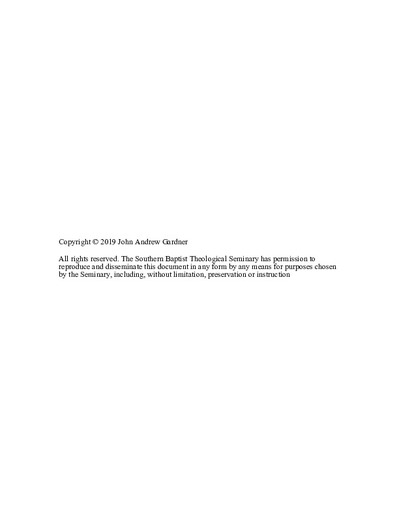Bridging the Gap: Engaging Adolescent Listeners through Expository Preaching
Abstract
BRIDGING THE GAP: ENGAGING ADOLESCENT LISTENERS THROUGH EXPOSITORY PREACHING
John Andrew Gardner, DMin
The Southern Baptist Theological Seminary, 2019 Faculty Supervisor: Dr. Michael E. Pohlman
The goal of this ministry research project is analyzing the strengths and weaknesses of three types of contemporary literature to form an integrated methodology for preaching to adolescent listeners with the goal of long-term information retention. By finding the strengths and weaknesses of expository preaching texts, student ministry manuals of delivery, and classroom teaching texts utilizing current studies in adolescent psychology, the goal is an exegetically sound, listener-sensitive sermon in the hopes of retaining the information for later in life.
The first chapter evaluates expository preaching texts and analyzes their tendencies to avoid adolescent listeners within their purview. The second chapter evaluates manuals for student ministers dealing with communication to students and identifies their propensity for showmanship or lax exegetical practices. The third chapter identifies current trends in adolescent psychology and studies concerning how students form long-term memory during the early and middle stages of adolescent development. It then identifies classroom strategies which maximize retention and student engagement. The fourth chapter takes the strengths of all three streams and brings them together in an eleven-step sermon methodology from series choice through processing the delivered sermon as a group. The fifth chapter describes the possible long-term and whole- congregational benefits of this practice as teens grow into adult members of their local church.

